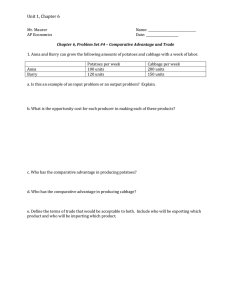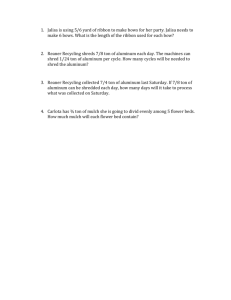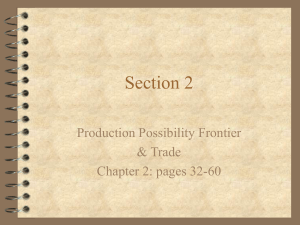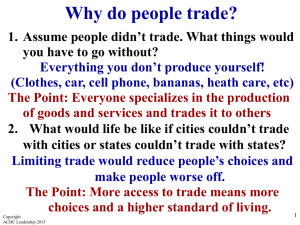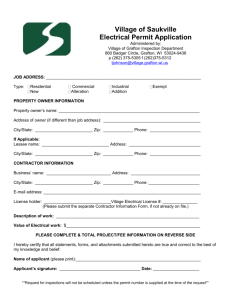Comparative Advantage w/s
advertisement
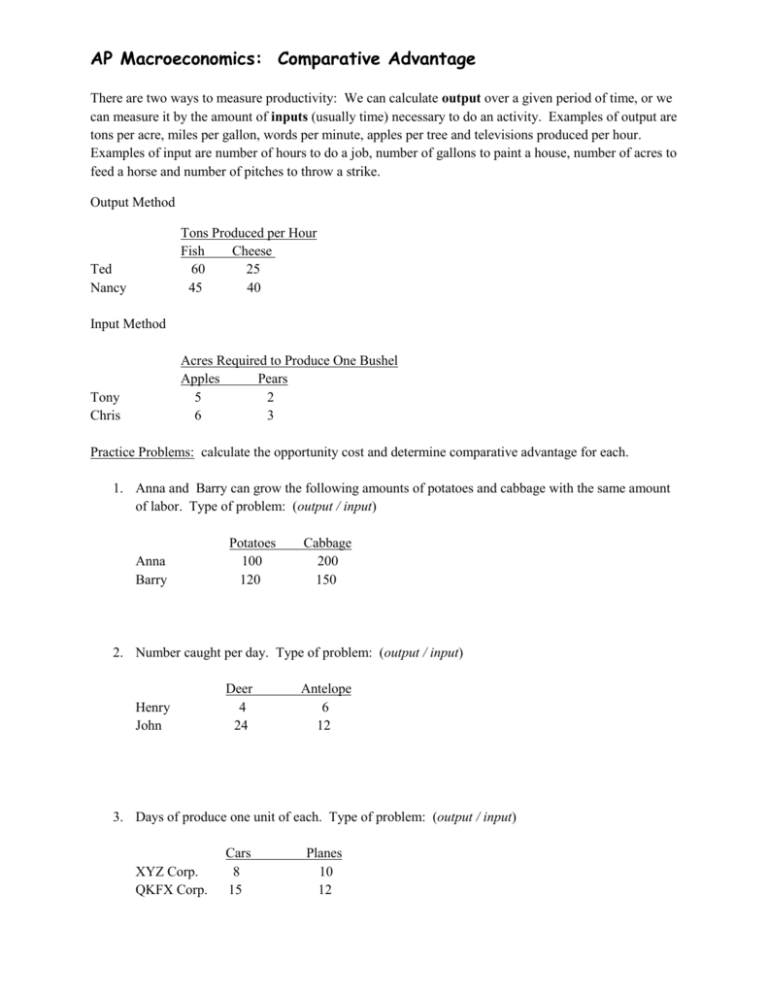
AP Macroeconomics: Comparative Advantage There are two ways to measure productivity: We can calculate output over a given period of time, or we can measure it by the amount of inputs (usually time) necessary to do an activity. Examples of output are tons per acre, miles per gallon, words per minute, apples per tree and televisions produced per hour. Examples of input are number of hours to do a job, number of gallons to paint a house, number of acres to feed a horse and number of pitches to throw a strike. Output Method Tons Produced per Hour Fish Cheese 60 25 45 40 Ted Nancy Input Method Acres Required to Produce One Bushel Apples Pears 5 2 6 3 Tony Chris Practice Problems: calculate the opportunity cost and determine comparative advantage for each. 1. Anna and Barry can grow the following amounts of potatoes and cabbage with the same amount of labor. Type of problem: (output / input) Anna Barry Potatoes 100 120 Cabbage 200 150 2. Number caught per day. Type of problem: (output / input) Henry John Deer 4 24 Antelope 6 12 3. Days of produce one unit of each. Type of problem: (output / input) XYZ Corp. QKFX Corp. Cars 8 15 Planes 10 12 AP Macroeconomics: Comparative Advantage 4. Acres to produce 100 bushels. Type of problem: (output/ input) India China Corn 9 8 Rice 3 2 5. To produce the following from one ton of olives. Type of problem: (output / input) Zaire Colombia Cans of Olives 60 24 Bottles of Olive Oil 10 8 6. Number of hours to produce a ton of oats or one bagpipe. Type of problem: (output / input) United States Scotland Oats 3 4 Bagpipe 2 5 7. Number of hours to produce a ton of wheat or one bolt of cloth. Type of problem: (output / input) United States Canada Wheat 1 3 Cloth 2 4 8. Number of hours to produce one computer or one auto. Type of problem: (output / input) United States Japan Computer 2 1 Auto 5 4
